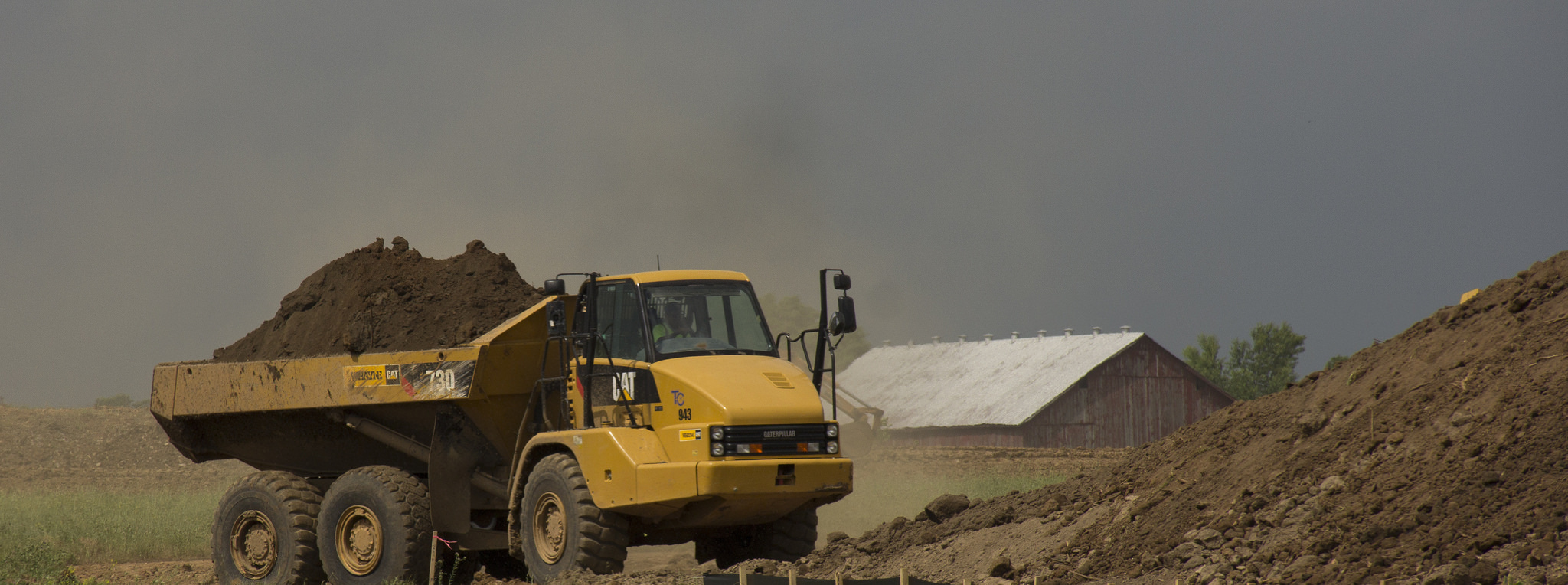By William Yragui
In a rural areas of Alameda County like Palomares Canyon (south of Castro Valley), residents have seen as many as 40 truckloads of construction debris or dirt dumped each day. There are 28 dumping sites known to the County. Residents have been impacted by noise, damage to the roads from the heavy trucks, and dust that coats homes. The dirt comes from construction sites, and its cleanliness is not certified. Residents like me believe that environmental organizations need to respond to unregulated landfills.
The Board of Supervisors enacted a temporary moratorium on “dirt imports” in this June. The County will soon hold public hearings and draft a permanent ordinance. However, the moratorium is opposed by the construction industry, dirt haulers, and operators of unregulated landfills. The self-described “stakeholders” have influence on the advisory committees, and the County listens to and documents their input, requests, suggestions and proposals. The foxes are guarding the hen-house, and may seek to weaken any proposed regulations. Details on the moratorium can be found online here.
A working group of the County's Agricultural Advisory Committee met on August 2, 2018, and it focused on cleanliness standards. However, this is only one aspect of the problem. Residents are also concerned about landslides, runoff into creeks, damage to the aquifers, and impacts on roads and bridges. The liabilities are scattered across the countryside, and externalized downstream. A director of the Planning Department spoke at the meeting, and said landfills can't be allowed to pop up across the countryside.
The County invites residents to speak at "informal” community meetings in town halls, libraries or school assembly rooms. Elected officials listen, but staff does not keep records or write reports. I fear the “informal” input from the community disappears, while suggestions from stakeholders are documented.
The debris and dirt is being dumped on private land that is zoned for agricultural purposes. But landfills are not agriculture. Legitimate farms and ranches often bring in costly compost, mulch, sand and other bulk materials. The volume of dirt transported may not distinguish a farm from a landfill. A farm could reasonably cover hundreds of acres with six inches of new topsoil. One has to follow the money to find the economic motivation. Landfills make money by the ton, not from food production — though some landfills plant grapes or olive trees as a "cover crop," where the agriculture serves as a facade.
I believe that landfills should be regulated more strictly than farms. I am alarmed by the landfills in Palomares Canyon, the Castro Valley canyon lands, and unincorporated Pleasanton and Livermore. Residents doubt the effectiveness of enforcement, so I’d urge the broader environmental community to try to beef up the dirt moratorium launched by Alameda County. A property owner can't build a house without any zoning approvals or permits. By the same token, dumping dirt in small volumes here, there, and everywhere can't remain unregulated.
Economics is forcing the dirt to be disposed nearby, because of the high cost of transportation per mile and per ton. The dirt won't be sent to Idaho or Nevada. The challenge for Bay Area environmental groups is to protect the rural lands that are right in our backyard, and to work together with local residents. Our current regulatory framework can’t handle the flood of dirt fill, so a reformation is required.
What You Can Do:
Attend an upcoming Planning Commission meeting (fill importing ordinance is item #5 on the agenda):
Monday, September 17 at 3:00 PM
Public Hearing Room
224 W. Winton Avenue, Hayward

Photo courtesy Anthony via Flickr Creative Commons.